Friendly Organic

Are there any new developments in non-toxic, environmentally friendly batteries ?
The development of non-toxic and environmentally friendly batteries is a crucial step towards sustainable energy storage solutions. These advancements not only reduce the environmental impact of battery production and disposal but also promote cleaner technologies for various applications, from electric vehicles to renewable energy storage systems. Below are some notable recent developments in this field: Solid-state batteries promise higher energy densities than traditional lithium-ion batteries, allowing for longer usage times and smaller form factors. The absence of liquid electrolytes reduces the risk of leakage or combustion, making these batteries safer than their liquid counterparts. Solid-state batteries can potentially last longer and withstand more charge cycles than conventional batteries. Organic radical polymer batteries are made from organic materials, which are less harmful to the environment than those containing heavy metals. Many components of organic radical polymer batteries can biodegrade, reducing waste at the end of their life cycle. The use of organic materials could lead to lower production costs compared to batteries that require rare or expensive metals. Rechargeable aluminum batteries are abundant and recyclable, making them an attractive alternative to rarer metals like cobalt and lithium. Aluminum batteries demonstrate stable performance over multiple charge cycles. They could be suitable for high-power applications such as electric vehicles. Sodium-ion batteries have resources that are much more abundant than lithium, which could make sodium-ion batteries a cost-effective solution. Unlike lithium, sodium does not present the same thermal runaway risks, enhancing overall safety. Sodium-ion batteries are considered more environmentally friendly due to their non-toxic nature and easier recycling process. Zinc-air batteries are made from eco-friendly materials and have a high energy density, making them suitable for applications requiring long-lasting power sources. Zinc is inexpensive and widely available, which could reduce the overall cost of these batteries. In conclusion, as technology advances, the development of non-toxic and environmentally friendly batteries continues to gain momentum. From solid-state innovations to organic radical polymers and beyond, researchers are working on solutions that aim to minimize environmental impact while maximizing performance and safety. These advancements hold great promise for a future where our energy storage needs are met without compromising the health of our planet.

How does organic farming benefit the environment ?
Organic farming is an agricultural system that emphasizes the use of natural resources and avoids synthetic chemicals such as pesticides, herbicides, and fertilizers. This method of farming has numerous benefits for the environment, including reduced pollution, improved soil health, increased biodiversity, energy conservation, and water conservation. By choosing organic products, consumers can support these environmentally friendly practices and help to create a more sustainable future.

Is organic food healthier than non-organic food ?
The debate over whether organic food is healthier than non-organic food has been ongoing for decades. While some argue that organic food offers more nutritional benefits and is better for the environment, others believe that the differences are negligible and that non-organic food can be just as healthy. In this article, we will explore both sides of the argument and try to answer the question: is organic food healthier than non-organic food? Arguments in favor of organic food include nutritional benefits, pesticide reduction, and environmental impact. Organic farming practices focus on building healthy soil and growing strong plants, which results in produce that is richer in nutrients like vitamins, minerals, and antioxidants. Additionally, organic food is grown without the use of synthetic pesticides and fertilizers, reducing the risk of harmful chemicals ending up in our food supply. Finally, organic farming practices promote biodiversity, reduce pollution, and help preserve natural resources. Arguments against organic food include minimal nutritional differences, low pesticide residues, and higher cost. While some studies have found that organic food is more nutritious than non-organic food, other research suggests that the differences are minimal. The levels of pesticides found in non-organic produce are generally well below what is considered safe by regulatory agencies, and washing produce thoroughly can further reduce pesticide residues. However, one of the biggest drawbacks of organic food is its higher cost compared to non-organic options. Ultimately, the decision of whether to choose organic or non-organic food depends on personal preference and individual circumstances. If you prioritize nutrition, reducing your exposure to pesticides, and supporting environmentally friendly farming practices, then organic food may be the way to go. However, if you are concerned about cost or believe that the nutritional differences between organic and non-organic food are minimal, then non-organic options may be suitable for you.

Can you recommend any eco-friendly sports equipment options ?
Eco-friendly sports equipment options include recycled yoga mats, bamboo skateboards, organic cotton gym clothes, recycled plastic outdoor gear, eco-friendly surfboards, biodegradable tennis balls, reusable water bottles, and sustainable running shoes.
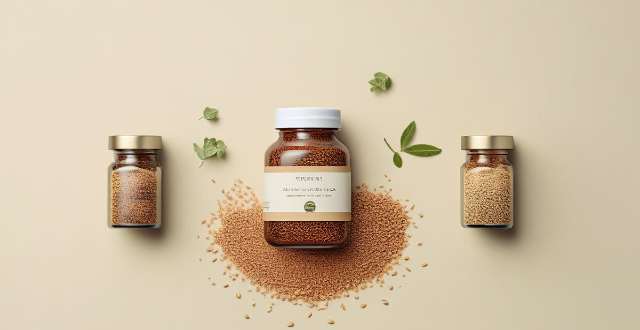
Are there any specific websites that specialize in organic products ?
There are several websites that specialize in organic products, including Amazon, iHerb, Thrive Market, Sprouts Farmers Market, Whole Foods Market, Organic Basics, Organic Authority, EcoCult, Gaia Herbs, and Dr. Bronner's. These websites offer a wide range of organic products, making it easy to find what you need online.
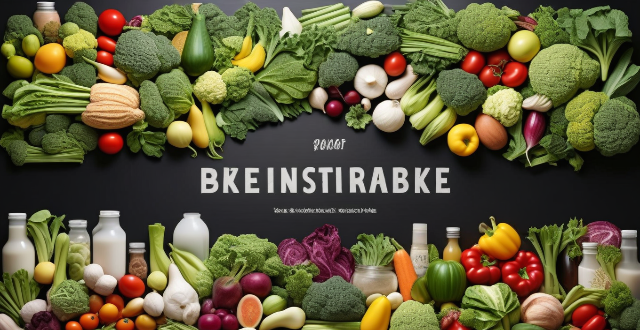
Are organic foods more expensive than non-organic foods ?
Organic foods are generally more expensive than non-organic options due to higher production costs, certification fees, and market demand. Factors such as labor intensity, lower yields, longer production time, accreditation costs, and ongoing inspections contribute to these increased costs. Despite the price difference, many consumers choose organic foods for health, environmental, and animal welfare reasons. The decision to purchase organic or non-organic often depends on individual priorities and budget.

Are organic foods healthier than non-organic options ?
The debate over whether organic foods are healthier than non-organic options has been ongoing for decades. Proponents of organic food argue that it is better for our health due to the absence of synthetic pesticides and fertilizers, while critics contend that there is no significant difference in nutritional value between the two types of food. In this article, we explore both sides of the argument and examine the evidence to determine if organic foods are indeed healthier than their non-organic counterparts. Arguments in favor of organic foods include the lack of synthetic pesticides or fertilizers, higher nutrient content, and fewer antibiotics and hormones. However, arguments against organic foods suggest similar nutritional value, concerns about pesticide residue, and potential negative environmental impacts. Ultimately, the decision to choose organic or non-organic foods should be based on individual preferences and priorities, as well as an assessment of the available evidence regarding the health and environmental impacts of each choice.

How do I choose eco-friendly cleaning products ?
This text provides a comprehensive guide on choosing eco-friendly cleaning products, emphasizing the importance of understanding eco-friendly labels, checking ingredient lists for harmful chemicals, opting for concentrated and reusable packaging options, supporting green brands, and considering homemade cleaners. By following these steps, consumers can make informed choices that contribute to a healthier planet and home environment.

What is the difference between natural and organic food ?
Difference Between Natural and Organic Food Natural food is minimally processed with no artificial additives, while organic food follows strict production standards without synthetic pesticides or GMOs. Organic farming promotes soil health and biodiversity, offering potential environmental benefits.
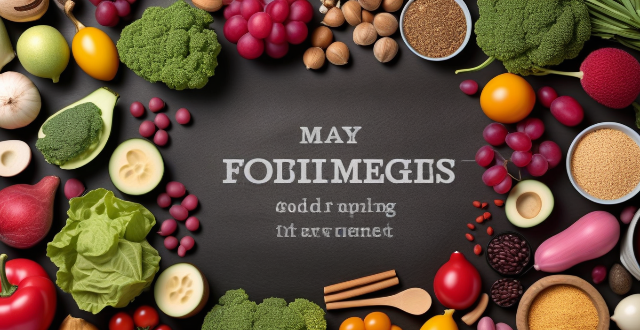
Can organic food help with weight loss ?
Organic food may aid weight loss by reducing exposure to harmful chemicals, offering higher nutrient content, having lower calorie density, and improving digestion. Incorporating organic options slowly, choosing locally grown produce, reading labels carefully, planning meals, and including protein sources can support a healthy eating plan conducive to weight loss.

Are there any eco-friendly sportswear brands that are also trendy ?
Sportswear has become a significant part of our daily lives, and many people are looking for eco-friendly options. However, finding sportswear brands that are both trendy and environmentally conscious can be challenging. In this article, we discuss some of the best eco-friendly sportswear brands that are also stylish and fashionable. Patagonia is a well-known brand that focuses on creating high-quality outdoor clothing and accessories using sustainable materials such as organic cotton, recycled polyester, and traceable down. Their sportswear line includes stylish jackets, pants, and shirts that are perfect for any outdoor activity. prAna is another popular brand that offers sustainable and stylish sportswear. They use organic cotton, hemp, and recycled materials to create their clothing, including comfortable leggings, joggers, and tank tops that are perfect for yoga or running. Adidas collaborated with Parley for the Oceans to create a sportswear line made from recycled ocean plastic. The collection includes shoes, jerseys, and shorts that are not only eco-friendly but also stylish and trendy. Reebok teamed up with Usain Bolt to create a sportswear line that is both eco-friendly and stylish. The collection includes tracksuits, t-shirts, and sneakers made from sustainable materials such as recycled polyester and organic cotton. Lululemon recently partnered with Girlfriend Collective to create a sportswear line made from recycled water bottles. The collection includes leggings, bras, and shorts that are not only eco-friendly but also stylish and comfortable. In conclusion, there are several eco-friendly sportswear brands that are also trendy. These brands use sustainable materials to create stylish and comfortable clothing that is perfect for any outdoor activity. By choosing these brands, you can make a positive impact on the environment while staying fashionable.

Are there any shopping apps specifically designed for eco-friendly products ?
There are several shopping apps available that are specifically designed for eco-friendly products. These apps allow users to browse and purchase products that are sustainable, organic, and environmentally friendly. Some of the popular shopping apps for eco-friendly products include EcoShopper, GoodOnYou, and Think Dirty. EcoShopper is a shopping app that offers a wide range of eco-friendly products, including organic food, natural beauty products, and sustainable fashion. The app allows users to search for products based on their specific needs and preferences, making it easy to find sustainable alternatives to everyday items. GoodOnYou is a fashion app that rates brands based on their sustainability and ethical practices. The app provides users with information about a brand's environmental impact, labor practices, and animal welfare policies, allowing them to make more conscious purchasing decisions. Think Dirty is a beauty app that helps users identify the ingredients in their cosmetics and personal care products. The app provides information about the safety and environmental impact of each ingredient, allowing users to make more informed decisions about their purchases. In conclusion, these shopping apps are specifically designed for eco-friendly products, making it easier for consumers to make more conscious purchasing decisions. By using these apps, users can support sustainable brands and reduce their environmental impact while still enjoying high-quality products.
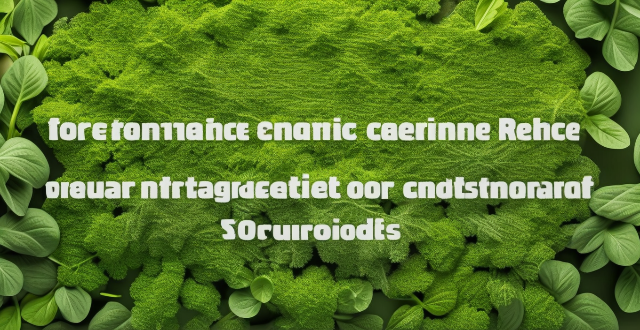
How can I support local and organic farming ?
Supporting local and organic farming is crucial for the environment, sustainable agriculture, and community development. To contribute, you can buy local and organic products, volunteer or participate in farming activities, and educate yourself and others about sustainable practices. By making informed choices, you can make a significant impact on supporting local and organic farming.
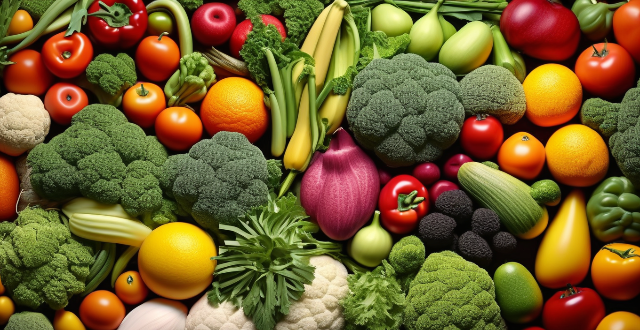
How can I make sure my fruits and vegetables are organic ?
To ensure your fruits and vegetables are organic, buyTo ensure your fruits and vegetables are organic, buy stores, grow your own using avoid contamination by washing produce thoroughly, and educate yourself on the latest research and news about organic farming.

Are climate-friendly products more expensive than regular ones ?
Climate-friendly products are becoming more popular, but there is a misconception that they are always more expensive than regular ones. The cost of these products can be influenced by factors such as manufacturing processes, materials used, and research and development costs. However, eco-friendly options may actually be less expensive in the long run due to energy efficiency, durability, and government incentives. It is important for consumers to consider both short-term and long-term costs when deciding whether to choose climate-friendly products.

What are the benefits of organic food ?
The provided text discusses the various benefits of organic food. The key advantages include: 1. **Health Benefits**: - No harmful chemicals, higher antioxidant levels, better nutritional content, and reduced risk of antibiotic resistance. 2. **Environmental Benefits**: - Sustainable farming practices, reduced pollution, lower energy consumption, and carbon sequestration. 3. **Economic Benefits**: - Supporting local farmers, creating job opportunities, long-term cost savings, and market diversity. Overall, choosing organic food contributes to personal health, environmental sustainability, and economic growth.

How do organic foods affect taste and nutrition ?
Organic foods have become increasingly popular due to concerns about health, environment, and sustainability. The article discusses the impact of organic farming on the taste and nutrition of food. It suggests that organic foods may have a richer flavor profile due to slower growth rates and no artificial flavorings. However, studies have shown mixed results regarding the nutrient content of organic versus non-organic foods. While some studies suggest higher levels of certain nutrients in organic produce, others find no significant difference. Additionally, organic farming practices aim to reduce pollution, conserve water, and promote biodiversity, contributing to a healthier planet. Ultimately, personal preference, budget, and individual health goals will play a role in deciding whether to opt for organic options.

Is it worth paying extra for organic food ?
Organic food has become increasingly popular in recent years, with many people opting to pay extra for these products. In this article, we explore the benefits and drawbacks of organic food to help you make an informed decision. Benefits of Organic Food: - Healthier and more nutritious, with no pesticides or chemicals and higher nutrient content. - Environmental impact is reduced through sustainable farming practices that promote soil health and reduce pollution. - Animal welfare standards are higher, with better living conditions for animals and no antibiotics or hormones used in meat and dairy products. Drawbacks of Organic Food: - Higher cost due to higher production costs and limited availability in some areas. - Quality consistency can be inconsistent, with no guarantee of high quality in every product. - Shorter shelf life can lead to waste if not consumed quickly enough. Whether or not it is worth paying extra for organic food depends on personal preferences, budget constraints, and availability. Consider your own priorities and make an informed decision based on those factors.

What are the best sources for buying organic food ?
The article discusses various sources for buying organic food, including farmers markets, online stores, health food stores, and community supported agriculture (CSA) programs. Each option has its own set of benefits and drawbacks, such as freshness, convenience, selection, cost, and support for local agriculture. The article emphasizes the importance of making healthy choices for oneself and family by choosing organic food.

What are some eco-friendly gift options for environmentally conscious friends ?
When it comes to finding the perfect gift for your environmentally conscious friends, there are plenty of eco-friendly options to choose from. Here are some ideas: 1. Reusable Water Bottles: Stainless Steel Water Bottles are durable, long-lasting, and can be used again and again. They come in various sizes and designs, making them a great gift option for anyone who wants to reduce their plastic waste. 2. Sustainable Clothing: Organic Cotton T-shirts are not only comfortable but also environmentally friendly. They're free from harmful chemicals and pesticides, making them a great choice for those who care about their health and the planet. 3. Reusable Shopping Bags: Fabric Tote Bags are lightweight, foldable, and can hold a lot of items. They're perfect for grocery shopping or running errands and help reduce the need for single-use plastic bags. 4. Plant-Based Candles: Soy Wax Candles are non-toxic, biodegradable, and burn cleaner than traditional candles made from paraffin wax. They come in various scents and make a thoughtful gift for anyone who loves candles. 5. Natural Beauty Products: Coconut Oil is a versatile oil that can be used as a moisturizer, hair conditioner, or even a makeup remover. It's all-natural and free from harsh chemicals, making it a great addition to any skincare routine. 6. Recycled Paper Products: Recycled Notebooks are made from recycled paper and are bound with eco-friendly materials. They're perfect for taking notes, journaling, or sketching and help reduce the demand for new paper products. 7. Solar-Powered Gadgets: Solar Chargers use solar power to charge devices like smartphones and tablets. They're portable, lightweight, and eliminate the need for disposable batteries. 8. Compost Bins: Indoor Composters make it easy to compost food scraps at home, reducing waste and creating nutrient-rich soil for plants. They're available in various sizes and styles to suit any kitchen. 9. Eco-Friendly Cleaning Products: Vinegar-Based Cleaners are effective at removing dirt and grime without leaving harmful residues behind. They're inexpensive and can be used on various surfaces throughout the home. 10. Upcycled Jewelry: Recycled Metal Jewelry is made from recycled metals like silver and gold, reducing the need for mining new materials. It's unique, stylish, and makes a great gift for anyone who loves fashion and sustainability.
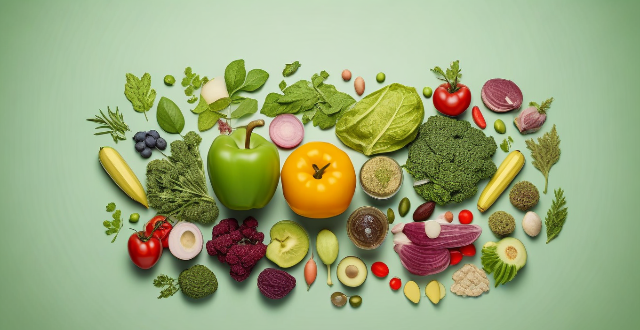
Are organic foods safer than conventionally grown foods ?
The article discusses the pros and cons of organic versus conventionally grown foods, including factors such as pesticide use, nutrient content, cost, availability, and environmental impact. While organic foods offer benefits in terms of reduced exposure to synthetic chemicals and potentially higher nutrient content, they also come with higher costs and limited availability. Conventionally grown foods are often more affordable and widely available but may contain lower levels of certain nutrients and pose potential risks from exposure to synthetic chemicals. The choice between organic and conventional foods ultimately depends on individual preferences and priorities when it comes to health, affordability, and environmental impact.

How do I read and understand organic food labels ?
Organic food labels can be confusing, but understandingOrganic food labels can be confusing, but understanding informed decisions about what you eat This certification ensures that the product has been grown and processed according to strict federal guidelines. 2. Check the List of Ingredients: Look for words like "organic," "made with organic ingredients," or "100% organic." These phrases indicate that the product has been made with organic ingredients. 3. Watch Out for Marketing Terms: Be wary of terms like "natural," "free-range," or "cage-free." Always look for the USDA Organic seal or other certifications that ensure the product meets specific standards. 4. Consider the Pesticide Residue: Even if a product is labeled as organic, there may still be some pesticide residue present. Look for products that are certified as "pesticide-free" or "certified organic." 5. Check for GMOs: Genetically modified organisms (GMOs) are not allowed in organic products. Make sure the product is labeled as "non-GMO" or "certified organic." 6. Read the Nutrition Facts Panel: Don't forget to read the nutrition facts panel on the back of the package. This will give you information about the product's calorie content, fat content, and other nutrients. Choose wisely based on your dietary needs and preferences.

Are there any eco-friendly luxury resorts ?
Eco-friendly luxury resorts are gaining popularity, offering a luxurious experience while minimizing environmental impact. These resorts implement sustainable practices such as using renewable energy sources, reducing water usage, and supporting local communities through their employment practices. Some of the top eco-friendly luxury resorts include Six Senses Laamu in the Maldives, Nayara Springs in Costa Rica, Amangiri in the USA, Soneva Fushi in the Maldives, and Banyan Tree Mayakoba in Mexico. By choosing to stay at one of these eco-friendly luxury resorts, travelers can contribute to protecting our planet while enjoying a memorable vacation.

How do I know if a product is truly organic ?
Identifying truly organic products requires looking for certification labels, checking the ingredient list, researching the manufacturer or brand, and visiting farmers markets and local stores. Certification labels such as USDA Organic, Euro-leaf, and JAS indicate that the product meets specific standards for organic production. The ingredient list should indicate that all ingredients are organic and free from GMOs. Researching the manufacturer or brand can provide information about their farming practices and quality control processes. Visiting farmers markets and local stores allows you to ask questions about the products and see them firsthand. By following these tips, you can ensure that you are getting genuine organic products that are free from harmful chemicals and pesticides.

Are there any natural or organic feminine care products available in the market ?
Natural and organic feminine care products have become increasingly popular as consumers seek gentler, chemical-free options for their personal hygiene. These products include natural deodorants, organic tampons and pads, shampoos and soaps made with plant-based ingredients, herbal remedies for menstrual pain relief, dietary supplements to support hormonal balance, and skincare solutions for feminine areas. By choosing these products, individuals can prioritize their health while also supporting sustainable practices in the beauty industry.

What role do consumers play in supporting climate-friendly products ?
Consumers have a crucial role in promoting climate-friendly products through awareness, eco-friendly purchasing habits, advocacy, and lifestyle changes.

How do climate-friendly products contribute to sustainable development ?
The article discusses the importance of climate-friendly products in sustainable development. These products help reduce greenhouse gas emissions, conserve natural resources, support renewable energy sources, and encourage eco-friendly lifestyles. By using less energy or producing fewer pollutants during their production, use, and disposal, these products contribute to a healthier planet for future generations. Examples include energy-efficient appliances, electric vehicles, reusable water bottles made from recycled materials, bamboo toothbrushes, solar panels, wind turbines, hydroelectric generators, cloth shopping bags, and compostable food containers. As consumers become more aware of the environmental impact of their choices, they can make informed decisions that support a more sustainable future.

Are there any government incentives for producing or purchasing climate-friendly products ?
Governments worldwide have implemented various incentives to promote the production and purchase of climate-friendly products, such as tax breaks, subsidies, grants, and regulations. These initiatives aim to reduce greenhouse gas emissions and promote sustainable practices.

Can you recommend family-friendly cruise options ?
This text provides recommendations for family-friendly cruise options, including Royal Caribbean International, Disney Cruise Line, Norwegian Cruise Line, and Carnival Cruise Line. Each cruise line offers unique amenities and activities that cater to families with children of all ages, making cruising an enjoyable experience for the whole family. The text also highlights the various features of each cruise line, such as family-friendly accommodations, kid-friendly entertainment, onboard pools, dining options, character encounters, kids clubs, family-friendly shows, spacious accommodations, recreational facilities, and affordable and fun cruise experiences.

Can small businesses also offer climate-friendly products ?
Small businesses can offer climate-friendly products by adopting sustainable practices and eco-friendly alternatives. They can reduce their carbon footprint, meet customer demand for eco-friendly options, save costs, gain a competitive edge, and build reputation. They can source materials sustainably, design energy-efficient products with reduced packaging, make operational changes like using green energy, and promote education about sustainability. Despite challenges like higher costs, they can seek funding, build partnerships, and educate customers to overcome these obstacles.